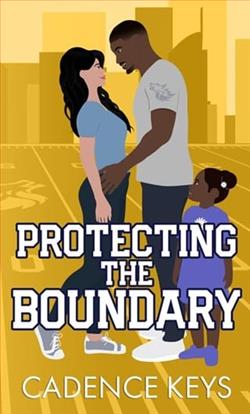Page 22 of Doctor Hot Mess
The gurney bursts through the doors moments later. EMTs rattle off vitals as we swarm around them. “BP’s tanking—90 over 50. Tachycardic at 140. Pupils sluggish but reactive. We intubated on-site for airway protection.”
“GCS?” I ask, stepping in beside them.
“Six,” one of the EMTs replies grimly.
I glance down at her as we transfer her to the trauma bed, my breath catching for a moment. Her face is barely recognizable—one eye is swollen shut, her cheekbone is a mess of bruises, and dried blood streaks across her temple. But it’s not just the fresh injuries that strike me. Beneath the angry, swollen patches are older, fading bruises—greenish-yellow marks on her jaw and the edges of her arms.
This isn’t just one bad night. This is a pattern.
I feel a familiar pang in my chest, a memory stirring uninvited. My aunt Clara, hiding black eyes behind oversized sunglasses. The whispered excuses about “walking into a door” or “tripping down the stairs.” I was just a kid then, but I remember the way my mom’s face hardened every time Clara came over with a new “accident.”
I grip the edge of the bed tighter, willing the memory away.
This woman—this Jane Doe—might not be Clara, but the signs are all the same. My stomach tightens as I note the defensive wounds on her forearms, the deep gashes like she tried to fight someone off. She fought hard, but it wasn’t enough.
“Let’s get a second IV line and hang more fluids,” I call out, trying to keep my voice steady. “I want a full set of labs—CBC, BMP, type and crossmatch. Imaging ASAP.”
I focus on the tasks, but my mind won’t stop spinning. She didn’t deserve this. No one does. And even though I don’t know her name, I feel this fierce, protective pull, like I have to do everything I can to make sure she gets out of here alive.
One of the residents leans over to examine her abdomen. “Possible rib fractures. Let’s add a chest X-ray and abdominal CT to the list.”
“On it,” I reply, grabbing a marker to label the IV bags.
The room hums with activity as we stabilize her. Blood pressure starts to rise, and the heart monitor’s shrill alarms settle into a steadier rhythm. She’s holding on, but just barely.
As we stabilize her vitals and prep for imaging, I step back for a moment, letting the rest of the team take over. My eyes wander back to her bruised face. Who did this to her? A boyfriend? A husband?
I know I’m not supposed to let it get personal, but it’s already too late.
“Harper,” one of the nurses says, jolting me out of my thoughts. “Imaging’s ready for her.”
“I’ll take her,” I say quickly, already stepping toward the gurney. It’s not entirely necessary—usually, a tech or transporter would handle this—but I don’t want to hand her off just yet. Not when she’s alone and vulnerable. Not when she doesn’t even have a name.
The other nurse raises an eyebrow but doesn’t argue. “Alright. Let us know if you need anything.”
“Will do,” I say, guiding the gurney down the hall toward radiology.
Her battered face stirs a protective instinct I haven’t felt in a while. Most days, I can separate myself from the tragedies that roll through these doors, but not this time. This one’s sticking with me.
As I maneuver her into the imaging suite, I glance down at her motionless form. “Hang in there, Jane,” I murmur under my breath. “We’ve got you.”
“Who does this to someone?” the tech murmurs beside me, his voice tinged with a mix of horror and disbelief.
“Someone who needs to feel powerful,” I reply, my voice steady but tight. The words leave a bitter taste in my mouth, the familiar anger bubbling just below the surface. I keep my face neutral, not letting the depth of it show.
The tech exhales sharply, his focus shifting back to the screen. “I’ll need to get clear chest and abdomen images. Can you help steady her if she starts to shift? We’ll need her as still as possible for the scans.”
I nod, stepping into position beside the gurney. “Just let me know when you’re ready.”
As he moves to set up the machine, I glance down at her battered face again, and my stomach twists even tighter. There’s something about her that feels too familiar—too close. The bruises, the broken skin...it all pulls at memories I’ve buried deep, ones I rarely let surface.
I take a slow breath, forcing myself to focus. Whoever she is, she’s here now. And I’ll do whatever it takes to protect her and nurse her back to health. And then, hopefully, I can convince her not to go back.
6:08PM
The soft beepof monitors greets me as I step into the step-down unit. It’s quieter here than the chaos of the ER—a different kind of tension hangs in the air, less urgent but still heavy. My patient, the Jane Doe from earlier, lies motionless on the bed, her face bruised and swollen, an oxygen cannula looped over her ears.
Technically, I should be wrapping up my shift soon. My assignment for the day kept me tethered to this case, ensuring a smooth transition from the ER to the ICU and, now, to step-down care. When they moved her out of the ICU a couple of hours ago, her vitals had stabilized, and the immediate crisis had passed. She doesn’t need constant monitoring anymore—just fluids, pain management, and rest. But seeing her like this, battered and alone, makes my chest tighten.















